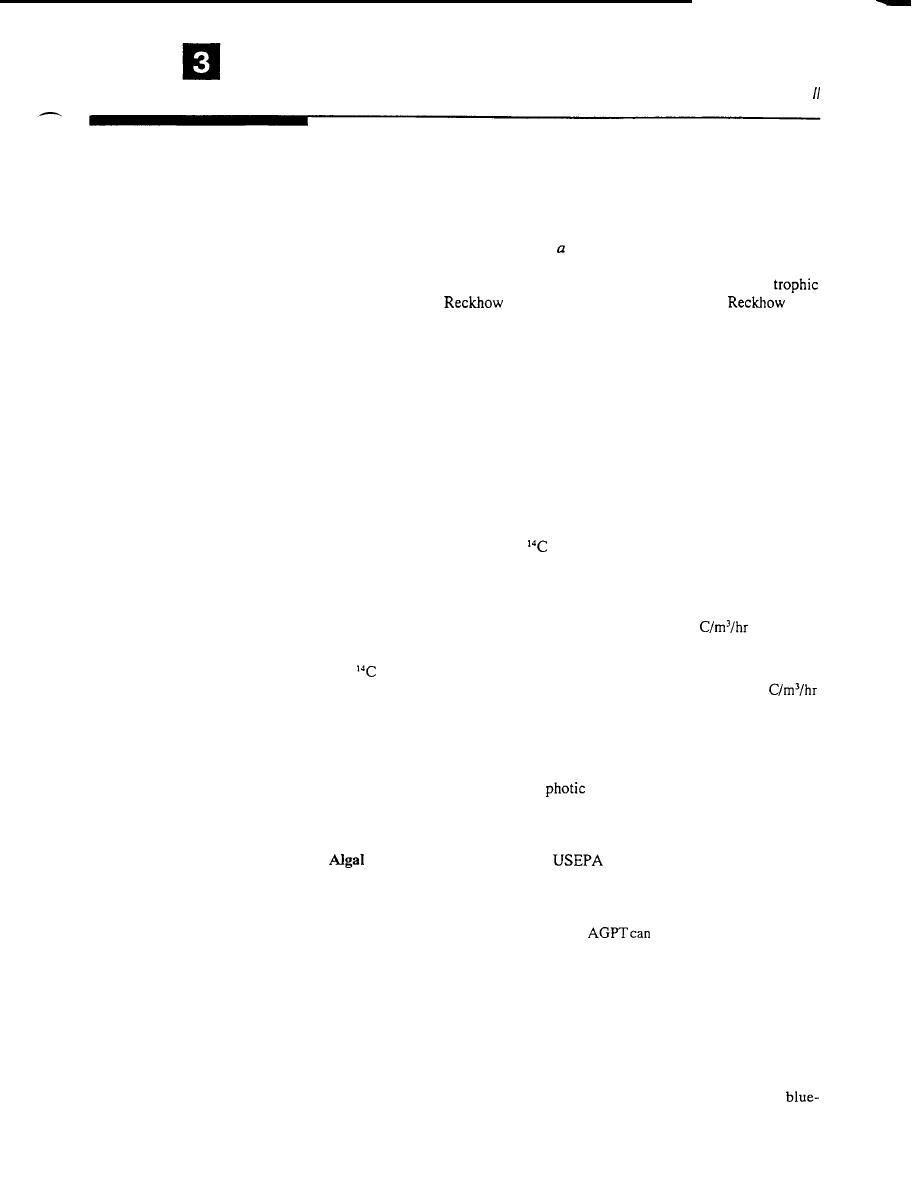
Level
Density. Algal density is the number of units or individual algae in a sample
(NCNRCD 1992). A unit may be defined as a single cell, a filament, or a colony.
When monitoring biovolume and density, both the numberofcells and the number
of units are recorded.
Chlorophyll a. Tracking chlorophyll can provide important evidence for lake
restoration programs. This variable is-part of many state lake quality standards
(NALMS 1988). Chlorophyll has also been empirically related to other
and Chapra 1983; Coffey et al. 1989;
et al.
state variables (see
1991).
Phaeophyton is a degradation product of chlorophyll that also absorbs light at the
same wavelength, impeding the measurement of chlorophyll. The concentration
of phaeophyton is greatest during bloom conditions. Accurate lab analysis
accounts for phaeophyton by subtracting it from the chlorophyll concentration.
Productivity. Phytoplankton productivity, along with that of macrophytes and
periphyton, generates the vast majority of a lake's organic matter from carbon
dioxide, water, and nutrients. Where phytoplankton dominate production, changes
in nutrient input should change productivity. Methods to determine productivity
are fairly well developed, but results are only as representative as the conditions
of the test. Lind (1985) gives the methods for the light and dark bottle oxygen
production-consumption and the
carbon dioxide uptake technique to estimate
productivity.
The light and dark bottle technique may be appropriate for monitoring eutrophic
lake productivity where a high sensitivity is not needed. The method is the least
expensive and can detect a change of photosynthesis of 20 mg
(Strickland
1960).
The
technique is suited for studies in oligotrophic lakes, where the method
must be more sensitive to detect a change on the order of 0.1 to 1 mg
(Wetzel 1983). Changes in photosynthetic activity of species may be due to
changes in nutrient composition or inhibition by a herbicide. The impacts of
herbicides are difficult to detect in the field.
Productivity is expressed on an area1 basis for the entire lake. Samples should be
taken for various depths within the
zone to estimate total productivity for
the water column (Lind 1985). Spatial gradients and the effects of season should
be considered when designing the sampling program.
Growth Potential Test_ The
(Raschke and Schultz 1987) has
developed the algal growth potential test (AGPT) to determine the potential for
nutrients in water or sediment to support or inhibit growth. The test can provide
information on the bioavailability of nutrients and algal response to nutrient
constituents or changes in constituents. The
be used for pollutant source
identifying and tracking controls through monitoring the bioavailability of
phosphorus in tributary or streambank suspended sediments, water body sedi-
ment, or other locations in the water column. Algae in the AGPT may respond
more quickly and may be less influenced by confounding factors than response
variables higher in the food chain.
Periphyton
Periphyton. In streams and shallow areas of lakes, monitoring periphyton may be
used to detect changes in chemical conditions (herbicides) or productivity.
Periphyton include protozoa, rotifers, nematodes, bacteria, diatoms, and
green algae, along with detritus attached to sediment, sand, rock, or other plants.
3.18



 Previous Page
Previous Page
